标签:对齐 disjoint adb 数据 索引 blank com span generate
树在数据结构中占有非常重要的地位。本文从树的基本概念入手,给出完美(Perfect)二叉树,完全(Complete)二叉树和完满(Full)二叉树的区别。如果学习过二叉树,但是对这三种二叉树并没有深入的理解,或者完全被国产数据结构教科书所误导(只听说过满二叉树和完全二叉树)的朋友不妨花点时间耐着性子将本文仔细阅读N(>=1)遍。
1. 树(Tree)的基本概念
1.1 树的定义
A tree is a (possibly non-linear) data structure made up of nodes or vertices and edges without having any cycle. The tree with no nodes is called the null or empty tree. A tree that is not empty consists of a root node and potentially many levels of additional nodes that form a hierarchy.
树是由结点或顶点和边组成的(可能是非线性的)且不存在着任何环的一种数据结构。没有结点的树称为空(null或empty)树。一棵非空的树包括一个根结点,还(很可能)有多个附加结点,所有结点构成一个多级分层结构。
[注:本文将node一律译为"结点"(而不是"节点"),因为joint或connection是节点,而node是结点。关于"结点"与"节点"请自行搜索浙江大学陈水福教授的文章--"360度"解读如何正确应用"结点"与"节点"]
例如: 【图片来源: https://upload.wikimedia.org/wikipedia/commons/f/f7/Binary_tree.svg】

A simple unordered tree; in this diagram, the node labeled 7 has two children, labeled 2 and 6, and one parent, labeled 2. The root node, at the top, has no parent. 上图是一棵无序的树示例。在上图中,标号为7的结点有两个孩子,分别是标号为2和6的结点。
根结点,在最顶端,它没有双亲。
1.2 树的基本术语
| Root | The top node in a tree. | 根 | 树的顶端结点 |
| Child | A node directly connected to another node when moving away from the Root. | 孩子 | 当远离根(Root)的时候,直接连接到另外一个结点的结点被称之为孩子(Child); |
| Parent | The converse notion of a child. | 双亲 | 相应地,另外一个结点称为孩子(child)的双亲(parent)。 |
| Siblings | A group of nodes with the same parent. | 兄弟 | 具有同一个双亲(Parent)的孩子(Child)之间互称为兄弟(Sibling)。 |
| Ancestor | A node reachable by repeated proceeding from child to parent. | 祖先 | 结点的祖先(Ancestor)是从根(Root)到该结点所经分支(Branch)上的所有结点。 |
| Descendant | A node reachable by repeated proceeding from parent to child. | 子孙 | 反之,以某结点为根的子树中的任一结点都称为该结点的子孙(Ancestor)。 |
| Leaf | A node with no children. | 叶子(终端结点) | 没有孩子的结点(也就是度为0的结点)称为叶子(Leaf)或终端结点。 |
| Branch | A node with at least one child. | 分支(非终端结点) | 至少有一个孩子的结点称为分支(Branch)或非终端结点。 |
| Degree | The number of sub trees of a node. | 度 | 结点所拥有的子树个数称为结点的度(Degree)。 |
| Edge | The connection between one node and another. | 边 | 一个结点和另一个结点之间的连接被称之为边(Edge)。 |
| Path | A sequence of nodes and edges connecting a node with a descendant. | 路径 | 连接结点和其后代的结点之间的(结点,边)的序列。 |
| Level | The level of a node is defined by 0 + (the number of connections between the node and the root). | 层次 | 结点的层次(Level)从根(Root)开始定义起,根为第0层,根的孩子为第1层。以此类推,若某结点在第i层,那么其子树的根就在第i+1层。 |
| Height of node | The height of a node is the number of edges on the longest path between that node and a leaf. | 结点的高度 | 结点的高度是该结点和某个叶子之间存在的最长路径上的边的个数。 |
| Height of tree | The height of a tree is the height of its root node. | 树的高度 | 树的高度是其根结点的高度。 |
| Depth of node |
The depth of a node is the number of edges from the tree‘s root node to the node. | 结点的深度 | 结点的深度是从树的根结点到该结点的边的个数。(注:树的深度指的是树中结点的最大层次。) |
| Forest | A forest is a set of n ≥ 0 disjoint trees. | 森林 | 森林是n(>=0)棵互不相交的树的集合。 |
2 二叉树(Binary Tree)
2.1 什么是二叉树(Binary Tree)
每个结点至多拥有两棵子树(即二叉树中不存在度大于2的结点),并且,二叉树的子树有左右之分,其次序不能任意颠倒。
2.2 二叉树的性质
(1)若二叉树的层次从0开始,则在二叉树的第i层至多有2^i个结点(i>=0)。
(2)高度为k的二叉树最多有2^(k+1) - 1个结点(k>=-1)。 (空树的高度为-1)
(3)对任何一棵二叉树,如果其叶子结点(度为0)数为m, 度为2的结点数为n, 则m = n + 1。
2.3 完美二叉树(Perfect Binary Tree)
A Perfect Binary Tree(PBT) is a tree with all leaf nodes at the same depth.
All internal nodes have degree 2.
一个深度为k(>=-1)且有2^(k+1) - 1个结点的二叉树称为完美二叉树。 (注: 国内的数据结构教材大多翻译为"满二叉树")
例如:
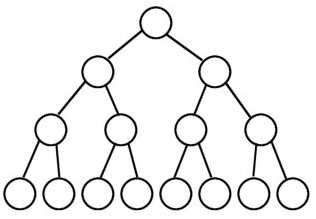
2.4 完全二叉树(Complete Binary Tree)
A Complete Binary Tree (CBT) is a binary tree in which every level, except possibly the last, is completely filled, and all nodes are as far left as possible.
换句话说,完全二叉树从根结点到倒数第二层满足完美二叉树,最后一层可以不完全填充,其叶子结点都靠左对齐。
例如:

2.5 完满二叉树(Full Binary Tree)
A Full Binary Tree (FBT) is a tree in which every node other than the leaves has two children.
换句话说,所有非叶子结点的度都是2。(只要你有孩子,你就必然是有两个孩子。)
注:Full Binary Tree又叫做Strictly Binary Tree。
例如:
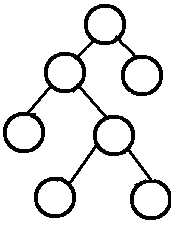
2.6 完美(Perfect)二叉树 v.s. 完全(Complete)二叉树
(1) 一棵完美(Perfect)二叉树看起来是这个样儿的, 【图2.6.1】
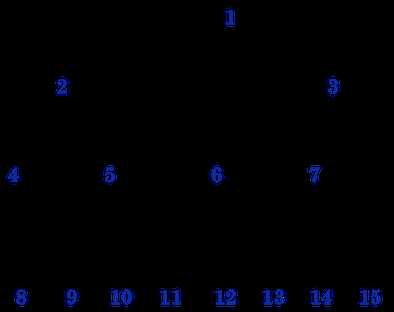
(2) 那么,将编号为15, 14, ..., 9的叶子结点从右到左依次拿掉或者拿掉部分,则是一棵完全(Complete)二叉树,
例如,将上图中的编号为15, 14, 13, 12, 11叶子结点都拿掉(从右到左的顺序), 【图2.6.2】
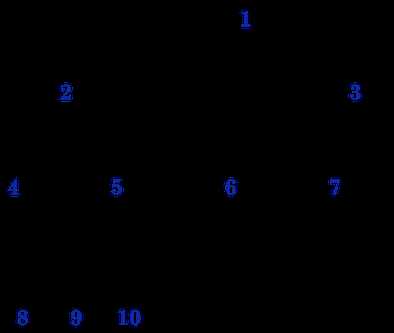
(3) 下图就不是一棵完全(Complete)二叉树,【图2.6.3】,
如果将编号11(K)结点从编号6(E)的左儿子位置移动到编号5(E)的右儿子位置,则变成一棵完全(Complete)二叉树。
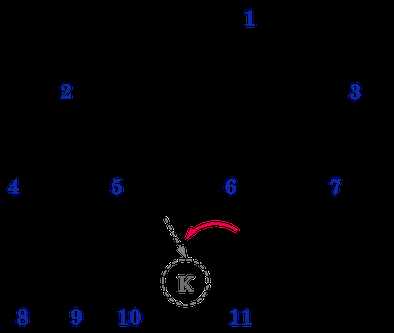
注: 图2.6.1, 2.6.2和2.6.3均来自:http://alrightchiu.github.io/SecondRound/binary-tree-introjian-jie.html, 但是,其将Full Binary Tree当做就是Perfect Binary Tree, 我认为是不正确的,特此说明。
特别说明: 其实,理解完全(Complete)二叉树可以借助于栈(stack)的思想。 例如,把图2.6.1中的完美(Perfect)二叉树的所有结点按照编号1, 2, 3, ..., 15依次入栈(push)。 那么,对栈的每一次出栈(pop)操作后,栈里保存的结点集对应到图2.6.1上去都是一棵完全(Complete)二叉树。
2.7 完全(Complete)二叉树 v.s. 完满(Full)二叉树
【截图来源:http://courses.cs.vt.edu/~cs3114/Fall09/wmcquain/Notes/T03a.BinaryTreeTheorems.pdf】
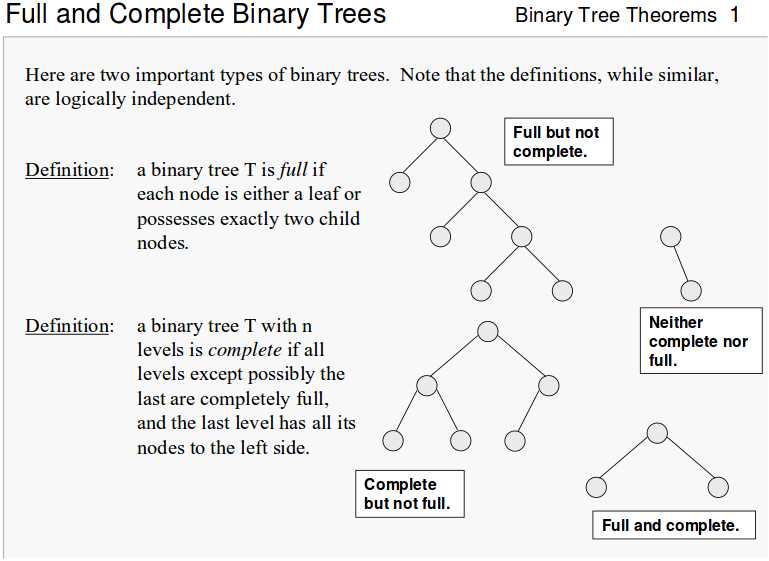
2.8 完满(Full)二叉树 v.s. 完全(Complete)二叉树 v.s. 完美(Perfect)二叉树
【图片来源: http://www.csie.ntnu.edu.tw/~u91029/BinaryTree2.png】
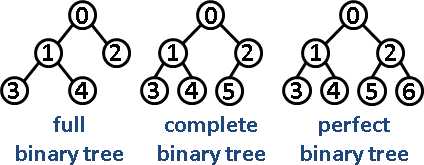
3. 总结 (下表参考来源)
| 完美二叉树 | Perfect Binary Tree |
Every node except the leaf nodes have two children and every level (last level too) is completely filled. 除了叶子结点之外的每一个结点都有两个孩子,每一层(当然包含最后一层)都被完全填充。 |
| 完全二叉树 | Complete Binary Tree | Every level except the last level is completely filled and all the nodes are left justified. 除了最后一层之外的其他每一层都被完全填充,并且所有结点都保持向左对齐。 |
| 完满二叉树 | Full/Strictly Binary Tree | Every node except the leaf nodes have two children. 除了叶子结点之外的每一个结点都有两个孩子结点。 |
以上内容转自https://www.cnblogs.com/idorax/p/6441043.html,感谢veli博主的分享。
二叉树的遍历方式通常有先/前序,中序,后序,层序遍历四种。我们用DLR、LDR、LRD来表示,创建二叉树也能以这样的方式创建。
首先可以将二叉树增加结点"#"转换成一个"完满二叉树(Full Binary Tree),先序创建顺序ABDH#K###E##CFI###G#J##
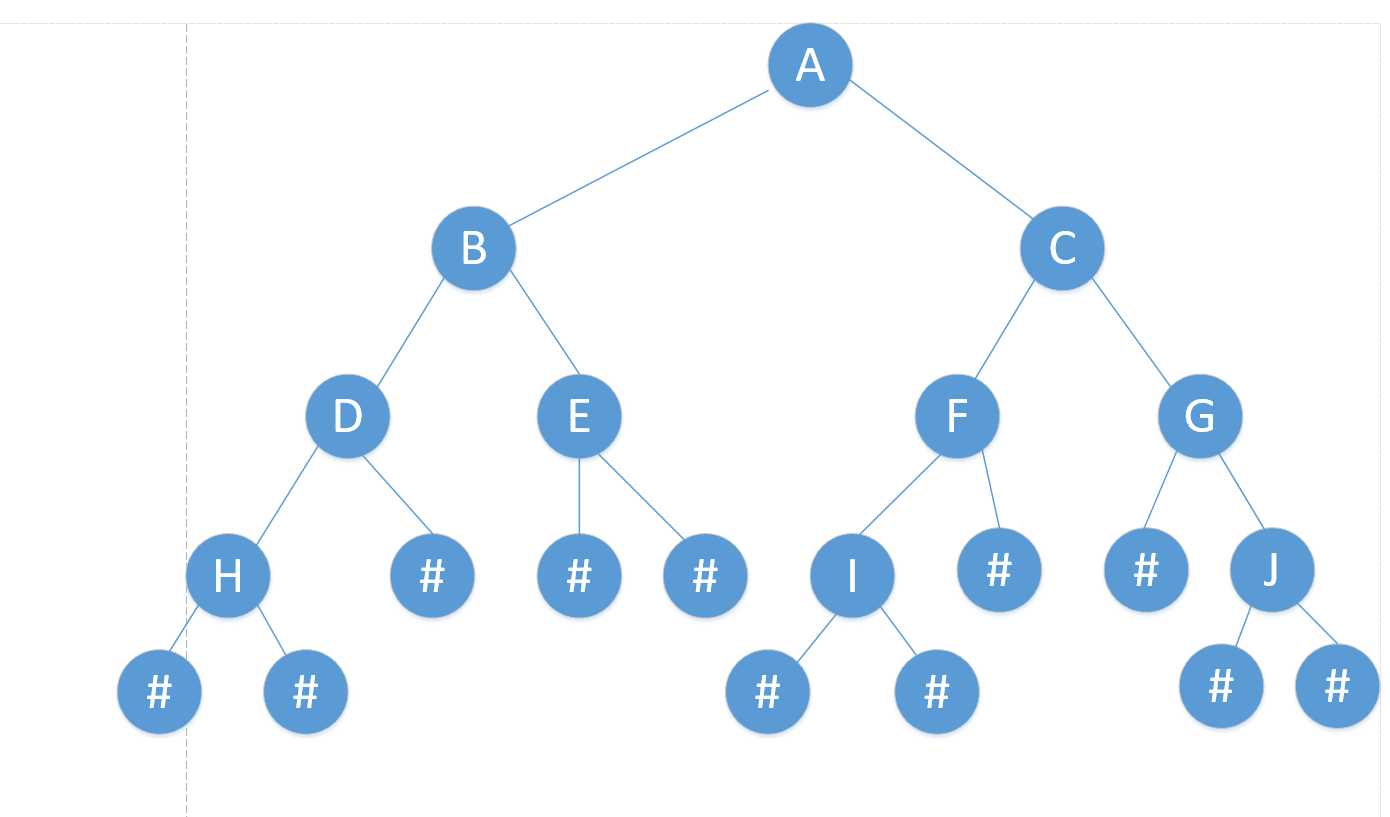
二叉树的实现:
package BinaryTree; //二叉树及线索二叉树实现 public class BinaryTree { public static String[] treeNodes; //初始化数组 public static Node root; //根结点 public static int index; //初始化结点 public static Node preNode=null; //线索化时记录前一个结点 public void initByDLR(String tree) { treeNodes=tree.split(""); index=0; root=new Node(); createTreeByDLR(root); } //先序创建(用#替代NUll结点,输入错误会数组溢出) public static Node createTreeByDLR(Node node) { String data=treeNodes[index]; index++; if(data.equals("#")) { return null; } else { node.setData(data); node.setLeftChild(createTreeByDLR(new Node())); node.setRightChild(createTreeByDLR(new Node())); return node; } } //返回根结点ROOT public Node getRoot() { return root; } //先序遍历 public void traversalByDLR(Node node) { if(node==null) { return; } System.out.print(node.getData()); traversalByDLR(node.getLeftChild()); traversalByDLR(node.getRightChild()); } //中序遍历 public void traversalByLDR(Node node) { if(node==null) { return; } traversalByLDR(node.getLeftChild()); System.out.print(node.getData()); traversalByLDR(node.getRightChild()); } //后序遍历 public void traversalByLRD(Node node) { if(node==null) { return; } traversalByLRD(node.getLeftChild()); traversalByLRD(node.getRightChild()); System.out.print(node.getData()); } //中序线索化二叉树 public void inThreadByLDR(Node node) { if(node==null) { return; } inThreadByLDR(node.leftChild);//递归左子树线索化 if(node.leftChild==null) { node.LTag=true; //前驱线索 node.leftChild=preNode; //左子树指向前驱 } if(preNode!=null&&preNode.rightChild==null) { preNode.RTag=true;//设置后驱线索 preNode.rightChild=node;//右子树指向本结点 } preNode=node; inThreadByLDR(node.rightChild); } //中序遍历线索二叉树 public void traversalByThreadedLDR(Node node) { //查找最左边结点 while(node.leftChild!=null||node.LTag!=true) { node=node.leftChild; } while(node!=null) { System.out.println(node.getData()); //如果后驱为索引 if(node.RTag) { node=node.rightChild; } else { node=node.rightChild; while(node!=null&&node.LTag!=true) { node=node.leftChild; } } } } } //二叉树结点(线索化) class Node { public String data; public Node leftChild; public Node rightChild; public boolean LTag; public boolean RTag; public String getData() { return data; } public void setData(String data) { this.data = data; } public Node getLeftChild() { return leftChild; } public void setLeftChild(Node leftChild) { this.leftChild = leftChild; } public Node getRightChild() { return rightChild; } public void setRightChild(Node rightChild) { this.rightChild = rightChild; } public boolean isLTag() { return LTag; } public void setLTag(boolean lTag) { LTag = lTag; } public boolean isRTag() { return RTag; } public void setRTag(boolean rTag) { RTag = rTag; } }
测试:
package BinaryTree; public class App { public static void main(String[] args) { // TODO Auto-generated method stub //"AB#D##C##" //ABDH#KECFI#G#J //ABDH#K###E##CFI###G#J## BinaryTree bt=new BinaryTree(); bt.initByDLR("ABDH#K###E##CFI###G#J##"); System.out.println("先序遍历:"); bt.traversalByDLR(bt.getRoot()); System.out.println("\n中序遍历:"); bt.traversalByLDR(bt.getRoot()); System.out.println("\n后序遍历:"); bt.traversalByLRD(bt.getRoot()); // bt.inThreadByLDR(bt.getRoot()); // bt.traversalByThreadedLDR(bt.getRoot()); } }
结果:
先序遍历:
ABDHKECFIGJ
中序遍历:
HKDBEAIFCGJ
后序遍历:
KHDEBIFJGCA
在二叉树中,如果某个结点只有一个孩子或者没有孩子,则它的LeftNode和RightNode会为空,我们可以充分利用这些空间。将当某个结点没有左孩子时,将它的LeftNode指向它的前驱。如果某个结点没有右孩子时,将它的RightNode指向它的后继。这时需要一个Flag来判断它是否具有左/右孩子,从而判断LeftNode和RightNode到底是指向前驱/后继还是指向它的孩子。
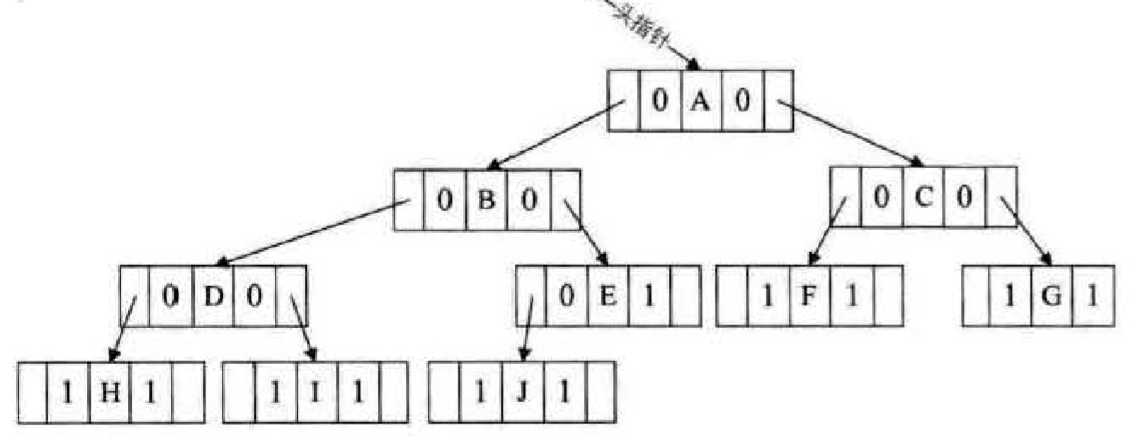
这里采用中序来线索化,当然你也可以使用先序和后序来线索化
线索二叉树的实现:
//中序线索化二叉树 public void inThreadByLDR(Node node) { if(node==null) { return; } inThreadByLDR(node.leftChild);//递归左子树线索化 if(node.leftChild==null) { node.LTag=true; //前驱线索 node.leftChild=preNode; //左子树指向前驱 } if(preNode!=null&&preNode.rightChild==null) { preNode.RTag=true;//设置后驱线索 preNode.rightChild=node;//右子树指向本结点 } preNode=node; inThreadByLDR(node.rightChild); }
测试:
bt.inThreadByLDR(bt.getRoot()); //线索化 System.out.println("\n中序遍历线索二叉树:"); bt.traversalByThreadedLDR(bt.getRoot());
标签:对齐 disjoint adb 数据 索引 blank com span generate
原文地址:https://www.cnblogs.com/siyyawu/p/10166393.html